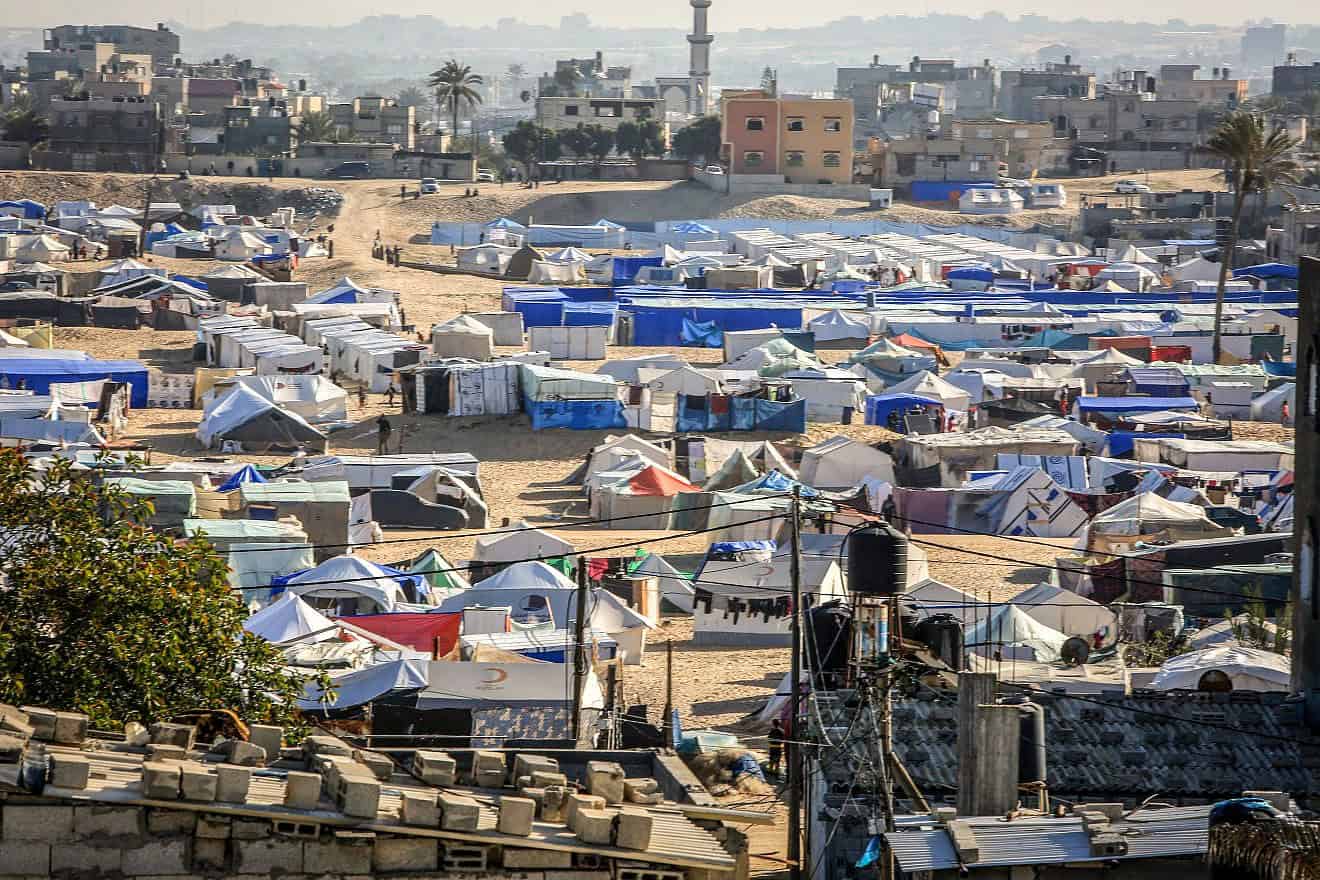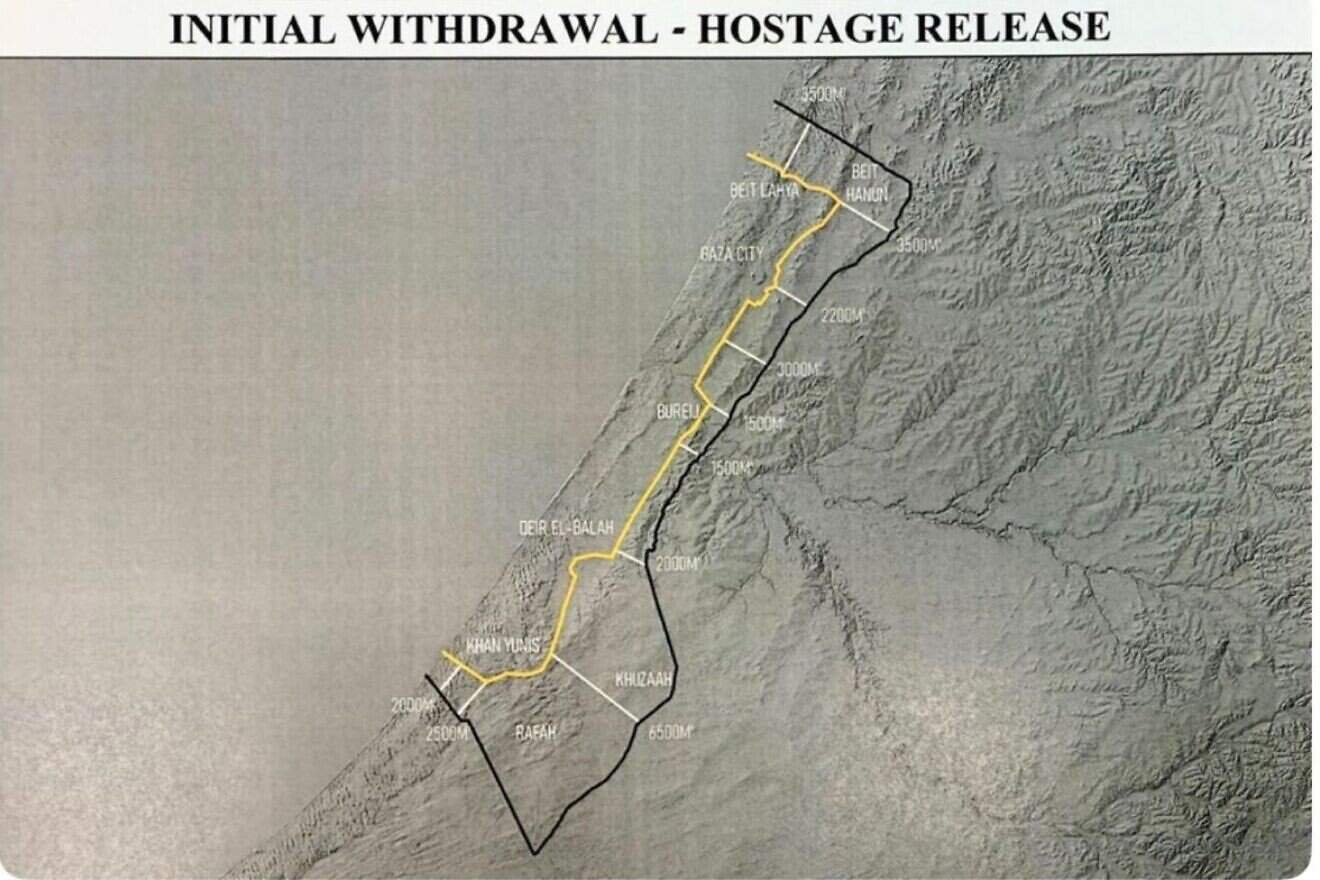by David Isaac
The first compound, still months from completion, will reportedly be located in Rafah, which Israeli forces are expected to begin clearing of rubble shortly.

New details have emerged regarding a U.S. plan to build housing communities for Gazans in the Israeli-controlled areas of the Gaza Strip. U.S. officials are calling the compounds “Alternative Safe Communities,” and hope Gazans will move to them for better security, job opportunities and to escape Hamas, The New York Times reported on Nov. 25.
The housing structures will be more permanent than tents but still temporary, said the Times, which spoke with 20 officials from the United States, Europe and Israel.
The type of container units used may be similar to those used for displaced Turkish citizens after the Feb. 2023 earthquake. Each of the compounds could ultimately house between 20,000 to 25,000 people, alongside medical clinics and schools.
“There’s a practical issue: How do we get people into safe housing as soon as humanly possible?” Aryeh Lightstone, a senior Trump administration official, who is in charge of the effort, told the Times. “This is the easiest way to do that.”
Lightstone reports to Jared Kushner, but also is in contact with Secretary of State Marco Rubio and Vice President JD Vance, according to the Times.

The proposal stems from the Trump administration’s broader peace plan, which has left the Gaza Strip divided into a Hamas-run western part, or “red zone,” where most Gazans live, and an Israeli-controlled eastern section, or “green zone.”
The U.S. administration’s wish to secure a quick housing solution for at least some of the estimated 2 million Gazans underscores the difficulty in disarming Hamas, which is a requirement of the second phase of the Oct. 10 ceasefire plan.
Hamas shows no sign it intends to implement that part of the agreement.
Hamas officials such as Osama Hamdan, have denied the terror group ever agreed to disarm, saying last week that the agreement Hamas accepted in Sharm el-Sheikh was limited to ending the war, opening border crossings and allowing in aid.
The United States would like to build where most people currently live, Lightstone told the Times, but rebuilding can only start once Hamas has been removed from power, in keeping with U.S. President Donald Trump’s 20-point plan.
Officials say the first compound is still months from completion. It will be located in Rafah, which Israeli troops are expected to begin clearing this week, the Times reported. Its cost could reach into the tens of millions of dollars.
Rubble removal could take months, particularly if crews encounter tunnel networks, unexploded ordnance, or human remains. After clearing, officials estimate another six to nine weeks would be needed to install the temporary structures.
The new compounds would supply housing for several thousand residents at first and expand over time to accommodate tens of thousands, the Times said.
Israeli security officials are expected to conduct background checks on Gazans who want to live in the new compounds. European diplomats worry that the standards could bar large segments of the population, including public-sector employees, such as police officers and medical staff, and relatives of Hamas terrorists, the Times reported.
“Israel absolutely must filter who’s coming in. If not, they’ll have Hamas inside,” IDF Brig. Gen. (ret.) Amir Avivi, founder and chairman of Israel’s Defense & Security Forum (IDSF), told JNS.
The IDSF is a private group representing more than 55,000 Israeli military reserve officers and operatives dedicated to strengthening national security.
Avivi argued that the plan is in Israel’s interests. The people who will be housed there are those who have turned against Hamas, he said. “This housing will be for those cooperating with Israel. It’ll be for the families of clans who already have agreed to fight,” he said. “You need to take care of their families.”
Avivi noted that some of those people already live on the Israeli side of the yellow line, but need better housing.
There’s an understanding on the part of Israel and the United States that people who will fight Hamas need incentives. “You have to give them something. And that something is housing. It’s a bit better than a tent in Al-Mawasi,” he said, referring to the humanitarian zone on Gaza’s southern coast into which Gazans have crowded for safety.
The first compound will be set up in Rafah near the Egyptian border for a reason, Avivi added. “It will make it easier for those who want to leave the Gaza Strip to do so.” He described it as an “interim area,” a kind-of staging ground for those who want to evacuate.
“Israel is not opening the Rafah crossing until we get all the hostages back. There are two remaining. Once we have them, we will open the Rafah crossing, enabling any number of Gazans to leave. I think that many of them will choose to leave Gaza,” he said.
“This point in the 20-point plan is not really discussed, but it’s a big one, which is that Egypt agrees to let any number of Gazans leave. It also says they can return, but I assume most of them won’t come back,” said Avivi.
According to point 12 of the Trump plan: “No one will be forced to leave Gaza, and those who wish to leave will be free to do so and free to return. We will encourage people to stay and offer them the opportunity to build a better Gaza.”
The compounds also will serve to show Gazans that there’s an alternative to Hamas. Residents will be under a different administration. Their children will go to schools free of radicalization. “This is part of dismantling Hamas as a governmental entity,” he said.
Also, the fewer Gazans near Hamas when Israel goes in to destroy the remaining terrorists, the better, he noted, adding that it’s only a matter of time before Israel’s military resumes its operations in Gaza. The timing may depend in part on when the United States comes to the realization that only Israel is willing to do the job.
David Isaac
Source: https://www.jns.org/us-advances-alternative-safe-communities-to-relocate-tens-of-thousands-of-gazans/
No comments:
Post a Comment